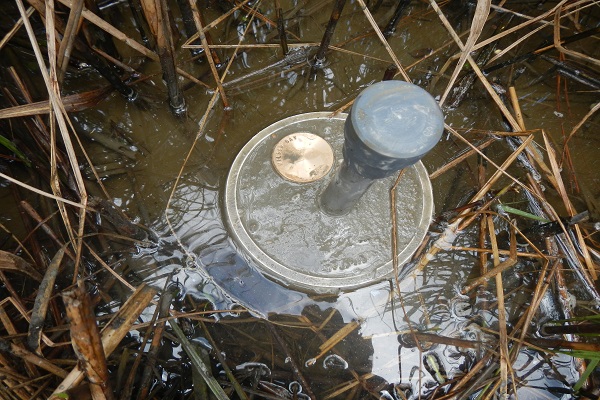FISHING FOR FEEDBACK

If you want to know what someone thinks, just ask. Seems simple enough. Or maybe not.
North Carolina Sea Grant seeks to better understand and meet the needs and wants of those who use our state’s estuarine and ocean waters. As fisheries specialists with North Carolina Sea Grant, we are focused on those who fish these waters.
Right now, we are conducting a survey with North Carolina’s recreational anglers. We want to ensure our extension, education and research programs remain relevant to this group.
North Carolina has a long tradition of saltwater angling — and it is a popular sport. In 2016, the N.C. Division of Marine Fisheries, or DMF, issued more than 780,000 licenses to saltwater anglers residing in North Carolina. That’s roughly 1 out of 13 people in the state. Combined with out-of-state anglers that fish our waters, North Carolina is home to the second-highest number of saltwater anglers behind Florida.
Recreational fishermen must obtain a Coastal Recreational Fishing License, or CRFL, to be able to legally fish in the state’s coastal waters. There are four types of individual CRFLs: 10-day, annual, lifetime before and lifetime after the implementation of the CRFL in 2007. We wanted to hear from the holders of each of these license types.
In late 2016, with DMF’s help, we randomly selected 1,000 licensed anglers, above the age of 18, who reside in North Carolina. But, “asking” is easier said than done.
We developed a survey with two main goals. First, we wanted to conduct a needs assessment of marine and saltwater anglers. Our questions would gather their opinions and interests on boating and angling practices, conservation and habitat enhancement, and fisheries science and management. Next, we asked when, where and how they would like to receive educational information about fisheries.
There is a fine art to doing surveys, drawing out desired information and obtaining high response rates. At the same time, the study has to follow scientific protocols to determine if the subset of answers received represents the angling community as a whole. To achieve these requirements, we used the Tailored Design Method, or TDM, adjusting steps to fit our situation.
TDM was developed by Don Dillman, a faculty member in the sociology department at Washington State University in the early 1970s. The methodology was intended to build trust between the recipient and the sender, resulting in more respondents willing to return surveys and provide honest answers.
TDM suggests that all phases of survey administration are equally important for success — from multiple contacts with recipients to the specific language and timing used to solicit responses.
We chose to do a mail survey mainly because DMF has that information for all license holders. To maintain the privacy of these anglers, DMF generated the mailing labels. We filled a van with the survey materials and drove to DMF headquarters in Morehead City to address the envelopes.
By the end of our survey, recipients could have been contacted up to five times. First, we mailed a “warm-up” letter, informing participants that a survey was coming. This was followed by the actual survey, which included a prepaid envelope to return completed materials. We also sent several reminder postcards and mailings as needed to encourage individuals to respond.
Even though an email survey might have been easier and less costly, mailing the materials enabled us to evaluate the effectiveness of an incentive in increasing responses, a possibility noted by researchers using TDM. To test our hypothesis, half of the recipients received fishing bait with the survey. These results may come in handy for our future survey efforts.
By late February, about 31 percent of recipients had returned surveys, with slightly more responses from those receiving the incentive. More importantly, we likely will have enough completed surveys from holders of each of the four license types to be able to speak in general terms about North Carolina anglers.
As we review our data, we also may conduct small focus groups and targeted surveys this summer. Such focused efforts might generate additional information we can compare to the responses from the mailed surveys. Ideally, we will use all three methods to gather feedback.
Saltwater anglers, like any group of natural-resource users, have changing needs and interests beyond just catching fish. The results of this survey will enable us to refine our outreach efforts to North Carolina’s saltwater anglers so that we might continue to effectively address the topics that matter to them.
This article was published in the Spring 2017 issue of Coastwatch.
For contact information and reprint requests, visit ncseagrant.ncsu.edu/coastwatch/contact/.
- Categories:


